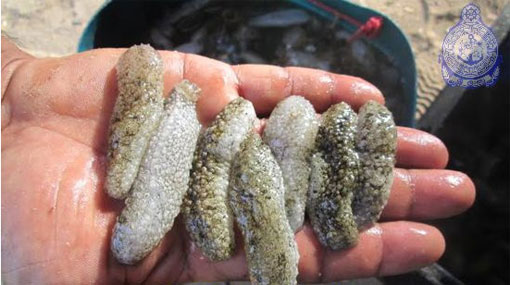
14 arrested for harvesting sea cucumbers illegally
The Naval personnel have arrested 14 persons while harvesting sea cucumbers, in the sea area off Keeramunal, the Navy said. The fishermen were apprehended along with 302 no’s of sea cucumbers, a dinghy, diving apparatus. The suspects subsequently were handed over to the fisheries inspector at Kilinochchi for further investigations.
Source – 21/02/2017 , Ada Derana 24 x 7/See more at: http://www.adaderana.lk/news/39231/14-arrested-for-harvesting-sea-cucumbers-illegally#sthash.Wtm799tK.dpuf
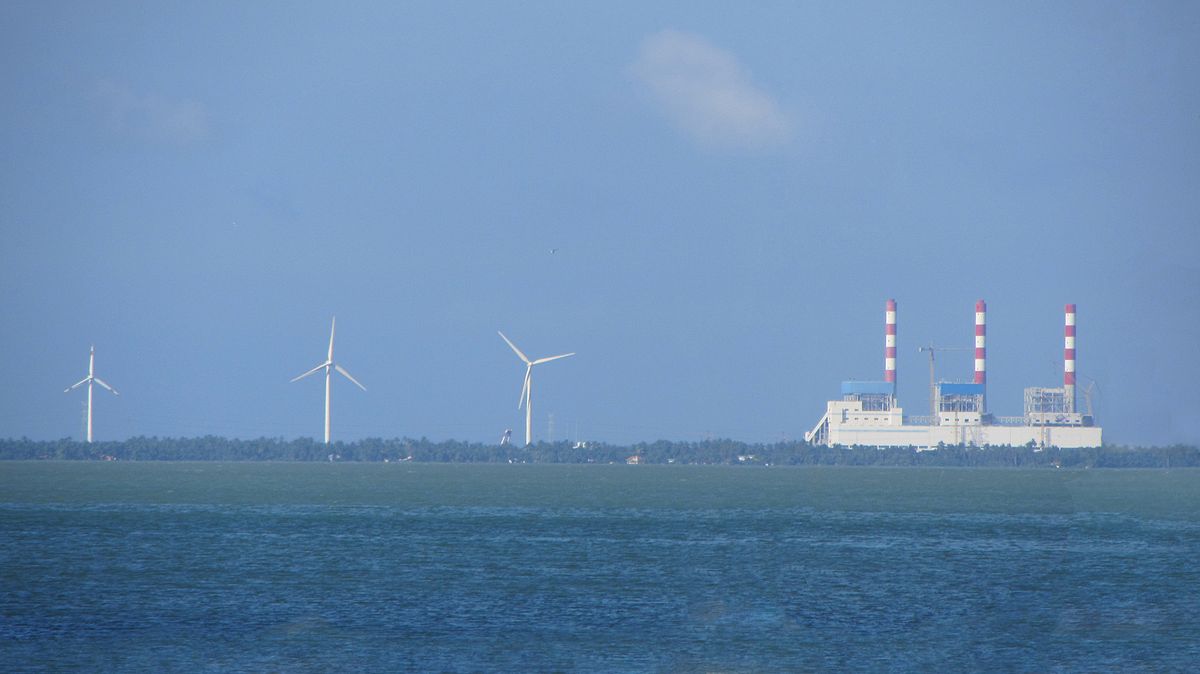
NARA to study N’cholai environment impact at last
By Maheesha Mudugamuwa
Six years after the commissioning of the country’s only coal power plant in Norochcholai, the National Aquatic Resources Research and Development Agency (NARA) has commenced a study to assess its impact on the marine ecology.
The Lakvijaya Coal Power Plant located in Norochcholai in the Puttalam District commenced 100 MW first phase in 2011.
Environmental groups and the fisher community have complained to the Fisheries and Aquatic Resources Ministry about the damage caused by the hot water from Norochcholai and called for an investigation.
Fisheries and Aquatic Resources Minister Mahinda Amaraweera held a special meeting with ministry officials, NARA, Ceylon Electricity Board (CEB) and the North Western Provincial Council Fisheries Ministry to discuss the issue.
NARA has also been asked to study whether the dust from the coal power plant was affecting the fisher community in the area and to propose ways and means of minimizing adverse impact of the coal-fired power plant.
Source – 20/02/2017, The Island / See more at -http://www.island.lk/index.php?page_cat=article-details&page=article-details&code_title=160664

Colombo garbage mountain dumped on the desks of leaders

The Colombo Municipal Council said it has abandoned seeking solutions to Colombo’s growing garbage problem and has declared it a national issue.
Commissioner, V K A Anura said that it has handed over the problem to President Maithripala Sirisena and Prime Minister Ranil Wickremesinghe as it is unable to find landfills.
This follows the Colombo Magistrate Court ruling last week that the council must clear the Meethotamulla garbage mountain soon. The case was filed by the police after residents blocked more waste dumping.
Commissioner Anura said residents were also opposed to dumping garbage in a Ja-ela site.
Meanwhile, United National Party lawmaker, S. M. Marikar said the Kolonnawa residents will not allow garbage dumping from next month.
Last Monday, the case was heard by Colombo Additional Magistrate Nirosha Fernando, who instructed the council to speed up the programme to clear the site and transport the garbage to Puttalam via train and turn waste into energy.
However, Colombo Megapolis and Western development Secretary, Nihal Rupasinghe said that commissioning a plant at Meethotamulla will not be viable as the garbage should continue to flow in.
The plan to transport garbage to Puttalam is also on hold as they await the environmental impact assessment report of the planned new site. The earlier site close to Wilpattu national park was abandoned due to opposition from the Wild Life Department.
Rupasinghe said the Megapolis Ministry has plans for the Meethotamulla dumping yard. “We have plans to turn it into a area with a beautiful landscape,’’ he said. “We have asked the CMC to hand over the site to the Urban Development Authority.’’
Meanwhile, it is learnt proposals have been invited from local and international agencies to turn the waste into electricity.
Marikar said there are 800 families in Meethotamulla who are suffering. “They fall sick often and even schools have to be closed because of the stench and dirt coming into their homes.’’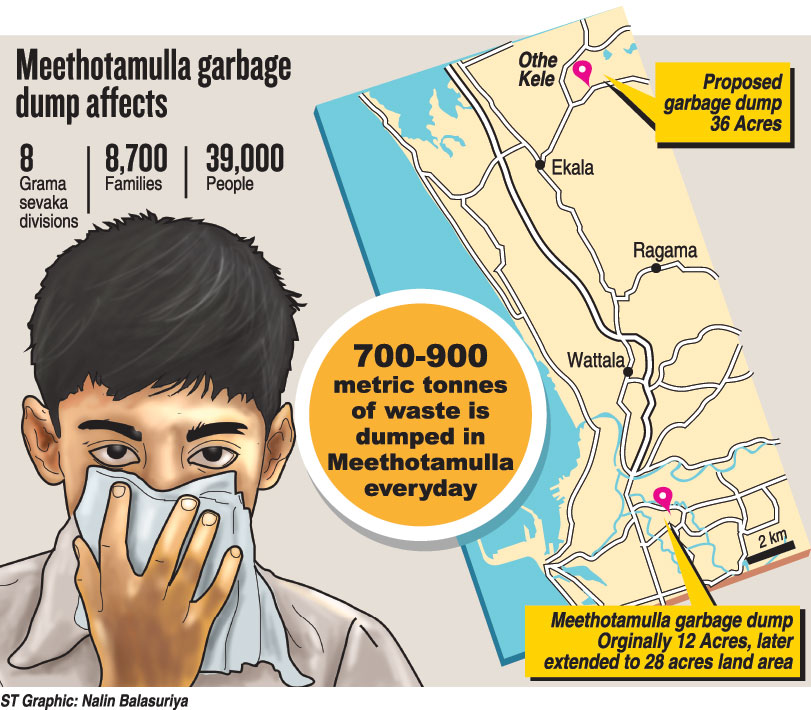
Every day 850 tonnes of garbage is brought to Meethotamulla.
Marikar said he had several fruitless meetings with the President, Prime Minister and discussions at cabinet meetings.
He alleged that the council was inactive and the authorities are not taking steps to address the matter. “Don’t bring the garbage here, take it somewhere,’’ he insisted.
The council is facing strong objections in Ja-ela. UNP lawmaker Kavinda Jayawardena said the council should find a permanent solution. “This is incompetency,’’ he charged.
The council had not followed procedures in selecting the land at Ekala. “No tender procedures or legal framework were followed,’’ he said.
An advertisement called for 30 acres within a 20-25 kilometre radius of Colombo. “They pay over Rs 20 million a month. It is a low lying land and not worth it. Even a small rain floods the entire area. It is not suitable for dumping,’’ he said.
He rejected the council’s claim of a court order permitting them to dump garbage. “There is no court order to dump here, they are just misleading the people.’’
The suggested recycling plant at the Ekala dumping yard will not happen. “Cannot work on promises,’’ he said.
Moreover moving garbage by road could cause traffic congestion and there will be spills. “Our people will take to the streets to protest,’’ he said.
The clergy is also supporting the people. Father Priya Jayamanne, parish priest of the church Our Lady of Sorrows, Ekala, said he will take the council to court. “We will move for an injunction and fight legally,’’ he said.
Central Environment Authority, Deputy Director General, Upali Indraratne, said it was important that the council find a alternative site to dump Colombo’s garbage. “CMC must find a sustainable land to fill,’’ he said.
He said the waste at Meethotamulla, where there is 3 million metric tonnes of garbage, should be recycled. “Commissioning a waste energy project in Muthurajawela will be a solution,’’ he said.
Also he said more sanitary landfills are needed. “We have only one at Dompe,’’ he said.
The government has also completed a site in Batticaloa and has plans for another four in Jaffna, Anuradhapura, Polonnaruwa, and Galle. He said designs have been completed and tenders will be called in March. The project is to be completed in 2019.

Source – 19/02/2017,The Sunday Times/ See more at -http://www.sundaytimes.lk/170219/news/colombo-garbage-mountain-dumped-on-the-desks-of-leaders-229599.html

Forest Reserve Under Threat
by Ifham Nizam
- Eco System and Water Resources Forests provide direct and indirect ecosystem services that help sustain human lives
- Most ancient village cascade systems have not been revived to function to their maximum capacity
- Ongoing destruction happening within the forest reserves of Wilpattu forest complex have had severe detrimental impacts on Sri Lanka’s natural heritage
- Only Wilpattu has villus consisting of both salt water as well as fresh water, making it especially unique.
- Our natural heritage, including our forests and wildlife, is what makes us who we are and it should be protected
The Coalition which comprises of more than 20 environmental organisations stressed that as these forest lands are contiguous to protected areas managed by the Forest Department and DWC, such a change in jurisdiction would smoothen the process of conservation and management of the overall forest cover. They had already submitted proposals to government to look into the matter and to take prompt action.
Eco System and Water Resources Forests provide direct and indirect ecosystem services that help sustain human lives. Natural forests directly provide food, water, medicine, timber and raw material for industry -clothing, paper, and construction- while supporting many processes that are required for the endurance of all life. Forest ecosystem services could be categorized as provisioning, supportive, regulating and cultural services.
Provisioning Services are ecosystem services that describe the material and energy outputs from ecosystems. They include food, water, air and other resources. Regulating Services are the services that ecosystems provide by acting as regulators eg. regulating the quality of air, regulating atmospheric carbon through sequestration and soil or by providing flood and disease control. Supporting services include habitats and diversity maintenance while cultural services include recreation, aesthetic appreciation and spiritual experience associated with forests among other things.
Among all, replenishment of groundwater is one of the key ecosystem services that sustain life on earth. Forests facilitate and regulate water interception and infiltration, which replenishes the groundwater and form rivers. Retaining water received through rainfall for the dry period is a service that helps humans to avoid droughts.
Nutrient cycling processes that take place within forests decomposes waste and forms soil supporting the flora. The flora support pollination as well as contribute to pest and disease control. Two of the main sources required for the generation of energy for humans are also derived from forests which are bio mass and water.
Agriculture cannot sustain without the genetic resources supplied by the forests. The aesthetic value of a forested area and its educational importance has enabled them to be of service as ecotourism destinations generating revenue for many countries in the world.
Recommendations
Recommendations to curtail further deforestation and for protection of water resources:-
1. Strict enforcement of existing environmental laws The Forest Ordinance, Flora and Fauna Protection Ordinance and the National Environment Act have sufficient provision for the protection of the country’s environment. If these laws are duly enforced by government authorities the remaining forest cover can be protected.
2. Protection of major catchment areas and riverine forests, strict regulations for development projects/activities within such areas must be maintained to ensure that forests capture rainwater to filter down to river systems and reservoirs.
3. Connection of fragmented forest areas through jungle corridors as a method of conservation, identifying suitable forested areas to function as corridors between major habitats of wildlife and declaring them as protected areas will preserve the remaining fragmented forest patches and reduce human-elephant conflict.
4. Rehabilitation of cascade systems
Most ancient village cascade systems have not been revived to function to their maximum capacity. Tanks could be desilted, invasive species removed and channels cleared to maintain optimum function. This will not only benefit villages but also the freshwater ecosystems.
5. Mahaweli, LRC, Plantation Corporation forest lands to be taken over by FD or DWC. As these forest land are contiguous to protected areas managed by the FD and DWC, such a change in jurisdiction would smoothen the process of conservation and management of the overall forest cover.
6. Temple lands to be protected from development activities Forested temple land are frequently being utilised for various development projects including cultivation often without any environmental assessment. Laws pertaining to temple land or Viharagam/Dewalagam need to be regulated.
7. Incorporating strategic planning methods to avoid unnecessary clearing of forests. An increasing number of development projects that do not incorporate conservation measures for existing forest cover haphazardly cause deforestation. Proper planning and project approval processes that are in keeping with the strategic environmental assessments and National Conservation Review should be adhered to.
Meanwhile, they also said that the ongoing destruction happening within the forest reserves of Wilpattu forest complex have had severe detrimental impacts on Sri Lanka’s natural heritage. Sri Lanka is an island with a rich natural heritage unparalleled in most countries.
“Our unique terrain and geographic location on the planet has gifted us with a climate unrivalled by most, allowing two monsoon seasons which allows the island’s farmers to grow two yields in a year, the rains keeping our plentiful rivers, lakes and reservoirs brimming to the full. In the past our island was self-sustainable, and once was even known to have been the main exporter of rice to the East as our stocks were plentiful,” a document put forward by a group environmentalists said.
It further said: “Sadly this is not the case anymore. Sri Lanka is suffering from one of the worst droughts ever recorded. We have not received the monsoon rains in the second half of 2016 and meteorologists are concerned we may not receive the next monsoon rains either. This would be disastrous for our agriculture and paddy farmers. Some experts predict a severe food and water shortage is imminent. Why has all this change taken place? Some point at global warming and climate change.
Others are more introspective and are looking at what changes are taking place on Sri Lanka’s soil at the present time. It is hard to miss the ongoing large scale environmental destruction. Forests are being cleared in Sri Lanka at a rate never seen before. “We all know that forests are our lifeblood. Forests are essential for rain. “
The Wilpattu forest complex is Sri Lanka’s largest forest complex, consisting of nine separately named forest reserves, and is an especially unique eco-system full of villu or natural pools which make this forest area a heaven for wildlife providing them a refuge from the area’s consistently dry climate. There are only two forest complexes in Sri Lanka that have this unique characteristic of containing villu.
Unique villus
Only Wilpattu has villus consisting of both salt water as well as fresh water, making it especially unique. Such forest complexes are rare in the whole world, so we are indeed privileged to have Wilpattu on Sri Lankan soil.
If we lose Wilpattu, we would be losing an entire eco-system that is considered most rare in the world, as well as all the endemic species and wildlife that call it home including elephant, leopard, bear, sambur as well as many other species. All this is at stake, with the ongoing threat of deforestation occurring within the Wilpattu forest complex. From the year 2009, several illegal settlement projects, aided by international aid organisations, have encroached into the Wilpattu forest complex.
To date over 3,000 acres of pristine forest have been lost to illegal forest clearing for these settlements. The most recent forest clearing has occurred inside the Vilaththaikulam forest, which was declared a forest reserve on June 10,2012 under the gazette number 1759/2. Clearing a declared forest reserve is illegal therefore the operations that are going ahead are in fact illegal and punishable by law.
The Wilpattu forest complex is made up of nine separately named forest reserves: 1. Wilpattu National Park 2. Wilpattu North Sanctuary 3. Thabbova Sanctuary 4. Marichchukkadai – Karadikulli (Kallaru) Forest Reserve 5. Veppal Forest Reserve 6. Vilatthaikulam Forest Reserve 7. Mavillu Forest Reserve 8. Periyamarippu Forest Reserve 9. Veerakkuli Cholai – Eluwankulam Forest Reserve. Even though Wilpattu forest complex is made up of several separately named forest reserves, one must understand that animals do not understand human boundaries and for the wildlife that lives within this forest complex and the biodiversity that exists within it, this is one single forest land.
There is sometimes misleading information being provided, claiming that it is not in fact Wilpattu forest that is being cleared. Even though the clearing is not occurring within the Wilpattu National Park borders, the deforestation is in fact occurring in the adjacent forests which are protected forest reserves that are part of the Wilpattu forest complex and therefore clearing of these lands are illegal under the Forest Conservation Ordinance and National Environmental Act. It is illegal to clear protected forest reserves: The forest clearing for the settlements began in Wilpattu Northern Sanctuary in 2009/10 and then moved to Kallaru forest reserve. The most recent destruction estimated to be over 700 acres of clearing of virgin forest land is in the area of Vilatthaikulam Forest Reserve, which was declared a protected Forest Reserve on June 10, 2012 under the gazette number 1759/2, under the Forest Conservation Ordinance. It is illegal to clear protected forest reserves without following due procedure.
This requires a process of the area being converted to a development zone through a new gazette notification which must be approved by parliament. In this case, it is the Ministry of Mahaweli Development and the Environment who must make this request in parliament. This process has not been followed during any time of the deforestation that has occurred inside the Wilpattu forest reserve.
Sri Lanka’s natural heritage belongs to all Sri Lankans. It is not someone’s personal property to do what they wish with it. Our natural heritage, including our forests and wildlife, is what makes us who we are and it should be protected at all costs for the people of today and for future generations. There have been no historical human settlements within the Wilpattu forest complex: It is being argued that, the resistance to the settlement projects being carried out inside Wilpattu forest complex, is to do with racial discrimination against the Muslim communities and that these people who are being ‘re-settled’ have lived on this land in the past.
Source – 17/02/2017, The Sunday Leader, See more at -http://www.thesundayleader.lk/2017/02/05/forest-reserve-under-threat/

Large Scale Illegal Gem Mining In Matale
by Janaka Wijegunatillake
- Some people have also begun to excavate land in forest reserves in the area in search for gems
- Paying just Rs. 225,000 for a consignment of gem rich earth worth millions of rupees has become a blessing for these criminals
- This illegal gem mining that is being carried out with the help and blessings of politicos has a long history
During a recent visit to the area, the scale of the gem mining racket was clearly visible and the racket continues despite such activities being banned.
Almost all the paddy fields in the Raththota Kaluganga area have become gem mines. The environment has been severely damaged as a result of the gem mining activities, which has some political backing.
A politician in the area, Rohini Kumari Wijerathna, is said to be involved in the racket and has obtained clearance to operate the large scale gem mining.
Some people have also begun to excavate land in forest reserves in the area in search for gems, sources said. The damage to state land is being carried out with the support of a government institution. Even when a complaint is made regarding this scam, these officials have adopted a clever strategy of delaying their investigations as long as possible to allow the racketeers to complete their illegal gem mining. This was clearly seen in a recent raid carried out on January29 in Ellewela.
On the night of January 29, a group of racketeers had carried out illegal gem mining within the Ellewela Ela forest reserve by using heavy machinery, taking out a large portion of earth to be transported to another location.
According to residents in the area, the illegal activity had been carried out while two policemen and several employees of the Gem Corporation had been present on the spot. After allowing the racketeers to remove the earth throughout the night, officials had ‘raided’ the location and imposed a Rs. 225,000 fine on the use of the heavy machinery and for the excavation of earth. According to residents in the area, paying just Rs. 225,000 for a consignment of gem rich earth worth millions of rupees has become a blessing for these criminals.
According to sources, three individuals, identified as Nilan, Rohitha and Buru Manju, were accused of being involved in the racket. They are notorious for having the backing of government officials to excavate the earth.
At present the gems could only be found in these forest reserves and the lands that have been acquired to build roads. Hence these racketeers have adopted such shrewd ways to bypass the law, in order to carry out gem mining inside these forest reserves during night time.
According to an officer attached to the Laggala police station, an individual arrested on the charge of carrying out illegal gem mining could be produced before a court and be released after paying a fine of Rs. 10,000.
According to the law, a person who is caught for mining gems inside a forest reserve cannot be fined by the Gem Corporation. Hence, by releasing the suspects and their plunder after imposing a fine does not come under the authority of the corporation. Since this procedure is contrary to the law, the officer in charge of the Laggala area in the Irrigations Department had filed complaints with the Geological Survey and Mines Bureau and the Laggala police regarding the matter under No. 0201341 and 7 CIB 209/236/31/01/2017 respectively.
This illegal gem mining that is being carried out with the help and blessings of politicos has a long history. When Wijerathna Banda, father of Member of Parliament of Matale district Rohini Kumari Wijerathna, represented the area, illegal gem mining had been carried out throughout the entire main road near the Kalu Ganga. The environmental damage which had commenced since then is being carried out non-stop expanding into all the areas in the region. They have commonly relied on the tactic of getting a trivial fine for a massive plunder with the help of government officials.
This has caused environmental damage of staggering proportions to the Laggala area. There is no doubt that the mineral resources on earth could be used to fulfill the necessities of the people.
But that should only be done according to the laws by minimizing the damage caused to the environment. If not, as the story of the golden swam ends, we all would also end up with absolutely nothing.
Source- 17/02/2017,The Sunday Leader/Sse more at – http://www.thesundayleader.lk/2017/02/12/large-scale-illegal-gem-mining-in-matale/
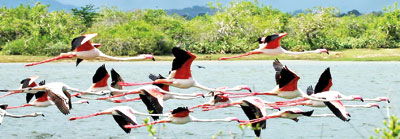
The flamingos are back but for how long?
By Randima Attygalle

Flamingos in flight at Palatupana. Pic by Ajantha Palihawadana
Flamingos in flight are a sight to behold. They had not been seen in the area after the 2004 tsunami but wildlife enthusiast Ajantha Palihawadana spotted nearly 30 birds a week ago at Palatupana.
On a tip-off from a friend, Palihawadana, head of the Responsible Trail, the eco-tourism arm of the Yala Adventure Resort left for Palatupana to find a flock of Greater Flamingos with a few juveniles among them. “Although Bundala is known to be a haven for flamingos, spotting them in Palatupana in the vicinities of the Palatupana saltern and lagoon is a special occurrence, especially since they are not known to have frequented this area for a considerable period of time,” says Palihawardena.
A wader bird residing in mudflats (coastal wetlands which are formed when mud is deposited by tides or rivers) and shallow coastal lagoons with salt water, flamingos feed on small shrimps, seeds, blue-green algae and molluscs. Using its feet, the flamingo stirs up the mud and sucks water through its beak and filters out its ‘edibles’. A migratory bird to us, flamingos arrive here in the north towards the end of August and are south-bound around March-April.
“In our part of the world, only two species of the bird are found: the Greater Flamingo and the Lesser Flamingo. While the former is the largest species with a long curved neck, the latter is the smallest flamingo with a dark red beak,” he explains.
The flamingos who migrate here are believed to come from Rann of Kutch in Northern Pakistan, according to Emeritus Professor and advisor to the Minister for Sustainable Development and Wildlife, Sarath Kotagama. The evidence however is anecdotal, says Prof. Kotagama who adds that there is no “concrete evidence” beyond that. “They arrive by end of August and generally occupy the northern parts of the island. Sighting 2000 to 3000 birds was not uncommon until 1994. With the Lunugamwehera Augmentation Programme, the numbers started dwindling drastically and in certain years we haven’t had them at all,” points out the Prof. who notes that there was a dearth of data during the war although a few are reported to have been spotted in Jaffna during this time.
According to Prof. Kotagama only one instance of flamingo-breeding is recorded in Bundala around 1987/88 by Rex de Silva.
The movement of flamingos is determined by several factors, says Prof. Kotagama. What is known as Photoperiodic factor or ‘light time’ propels the birds to move and in the absence of it, they are left behind. “Those who don’t move out are known as stragglers and they are very often non-breeders,” says the ornithologist who also cites ‘social facilitation’ which fuels their movement. “When one flamingo takes off, the others follow, the reason why we see large flocks.”
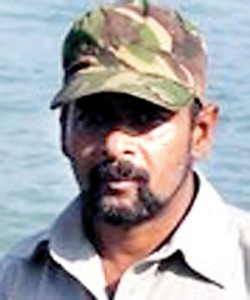
Ajantha Palihawadana
Flamingos also need to accumulate a sound fat base during their stay here in order to make the journey back home. If they cannot pile up fat during the migratory season, flamingos tend to avoid certain locations. “This is what happened in Bundala especially with erratic weather patterns and the loss of habitats — the negative impact of the Lunugamwehera Augmentation Programme,” he says. Bundala was declared a Ramsar site owing to its unique distribution of the lagoon systems including Malala and Udamalala but that was drastically altered with the Lunugamwehera Augmentation Programme which resulted in the loss of ‘blackish salt water’ in the region.
“With monsoon rains, there was natural breaking of the lagoon mouth which brought salt water interior along with prawn larvae, a staple to the flamingo. However as a solution to flooding which affected cultivation in the area, a permanent outlet from Malala to the sea was put in place. The net result was that the lagoon mouth never opened and the Bundala complex including Udamalala and Malala turned completely into freshwater ponds,” said Prof. Kotagama who points out that this ‘mistake’ not only affected wildlife and other organisms dependent on salt water but also killed the lucrative prawn industry in the area.
What gives the flamingo its unique colour is its staple krill which thrives in salt water. “The high calcium in krill gives it colour and when this staple diet was absent in the area they would have probably considered it a waste to come there,” explains Prof. Kotagama.
Commenting on the recent spotting of flamingos in Palatupana, he says that the birds may be considering alternative feeding grounds as the lagoons in the area are very saline. “However, we should not forget that their real feeding ground is lost and since 1998 we have been lobbying for the reversal of the damage by considering the possibilities of diverting the Lunugamwehera drainage directly to the sea without having to pass through Malala and Udamalala. It is a very expensive exercise, there is no question about it. But we should not forget that the cost will be for the sake of the environment,” notes Prof. Kotagama.
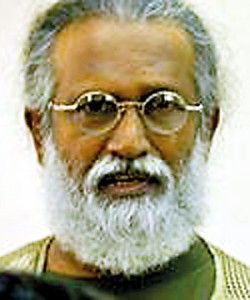
Prof. Sarath Kotagama
Source-12/02/2017,The Sunday times,See more at – http://www.sundaytimes.lk/170212/plus/the-flamingos-are-back-but-for-how-long-227652.html

Kalido Beach in Kalutara is facing challenges due to natural erosion combined with growing number of visitors and pollution.
Kalido Beach in Kalutara, is te strip of beach that runs between Kalu Ganga and the Indian Ocean. Although the area is a huge tourist attraction, it is known for its sensitive ecosystem facing challenges such as natural erosion combined with a rapidly growing number of visitors causing damage to the vegetation cover and threats due to pollution.
Biodiversity Sri Lanka visited the area together with the Department of Coast Conservation and Coastal Resources Management to determine possible areas of intervention to minimize adverse effects to this valuable ecosystem.
We were saddened to see irresponsible destruction to the thick cover of beach front Pandanus (Watakeiya) by local visitors. Indiscriminate dumping of garbage was seen everywhere. This ecosystem has acted as a barrier to the tsunami of 2004.
If the value of these rich natural resources are not understood by the communities that use them, we are bound to face more threats and undue challenges into the future.
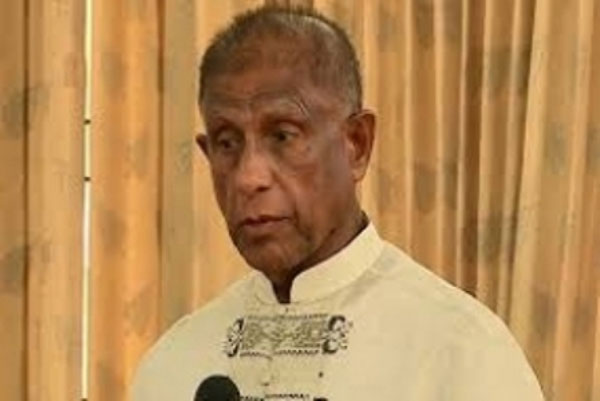
Mission to rescue animals from drowning islands in Morgahakanda
A group of naval personnel was deployed to Moragahakanda on Wednesday (8th Feb.) to launch a mission to rescue the animals that are facing life threats due to the filling of water to the Moragahakanda reservoir.
President Maithripala Sirisena in accordance with a request made by the Minister of Sustainable Development and Wildlife Gamini Jayawickreme Perera has ordered to launch this mission.
The water filling of the Morgahakanda reservoir of the Moragahakanda – Kaluganga project commenced on 11th January 2017 and a land of 29 square kilometers is covered by the reservoir. With the new development, 11 islands out of 12 in this area were drowned destroying the habitats of many mammals and reptiles. Earlier, the Wildlife Conservation Department according to a request made by the Ministry of Mahaweli Development launched a mission to rescue such threatened animals. This mission carried out by the naval personnel will be the second phase of it.
Presently, about 3,000 animals in Moragahakanda reservoir area have been displaced due to the situation. Missions to rescue animals and releasing them to the forest reserves are being done by the Ministry of Sustainable Development and Wildlife, Wildlife Conservation Department, and Sri Lanka
Source-10/02/2017 /Ceylon Today ,See more at -http://www.ceylontoday.lk/article20170101CT20170331.php?id=3943
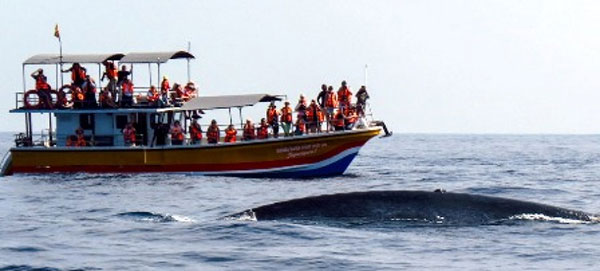
Don’t rip-off foreigners coming for Whale Watching – Fisheries Minister
Fisheries Minister Mahinda Amaraweera recently emphasized the owners of whale-watching boats that charge higher-fee from foreign tourists is unreasonable as they are not given any special privileges.
He said that foreign tourists visiting Sri Lanka shall not be swindled since it will harm the reputation of the country and the tourism industry. Minister requested that the boat fee charged from a foreigner shall be reduced to at least Rs 4,000.
Sea area around Mirissa and Kapparatota Fishery harbors are hugely inhabited by Whales and a large number of foreign tourists come for Whale watching. Such foreigners are transported by way of fishing vessels and a sum of Rs. 6,000 is charged from one person for a single trip. Minister of Fisheries and Aquatic Resources Mahinda Amaraweera said that he has received many complaints against this unreasonable charge.
Also, the Ministry has planned to initiate a Green Harbour center in Mirissa and Kapparatota harbors and an attractive multi-storey building will be established as a tourist center under an estimated cost of Rs 500 million. Sea food centers will also be established in this tourist center which will be operated by CFHC ensuring the comfort of foreign tourists.
Source-13/02/2017, Ceylon Today, See more at – http://www.ceylontoday.lk/article20170101CT20170331.php?id=3986
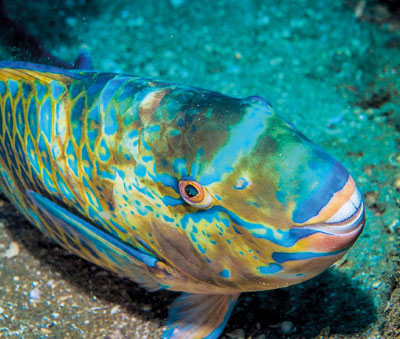
Alarm bells ring for popular reef fish
verexploited coral reef fish which are rapidly becoming rarer, conservationists believe.
Gal malu, or rock fish, are generally popular in the country and these include varieties of grouper and parrot fish (girawa).
The National Aquatic Resources Research and Development Agency (NARA) initiated a study in January to asses status of ‘edible reef fish’ commonly known as ‘gal malu’. The study will take about a year, the Sunday Times learns.
“The size of fish caught is smaller on average. Fishermen now must use more fishing gear to catch a similar volume of fish they caught a decade ago. This alone indicates the depletion of edible ‘gal malu’ populations,” points out Dr Sisira Haputantri – the head of Marine Biology Division of NARA.
The killing of a human-sized humphead wrasse (cheilinus undulates) in Unawatuna by spearfishing two weeks ago helped intensity demands for a ban on spearfishing.
The Director General of the Department of Fisheries & Aquatic Resources, M C L Fernando, said a proposal to ban spearfishing is now being reviewed by the government’s law drafters.
Action has been also taken to ban the fishing of tomato grouper (cephalopholis sonnerati) – a beautiful coral fish known as ‘ran thambuva’ locally. Tomato grouper inhabits holes in the reef with cleaner shrimp and helps maintain the hiding places by fanning out sand. Scarlet shrimp and painted shrimp are high value items in the ornamental fish trade and without the groupers, the shrimp populations would die out.
Many other reef fish are threatened by overfishing and high consumption locally and overseas. The SundayTimes reported last week that the Sub-Aqua Club has appealed to the Minister of Fisheries to protect 15 large coral fish. Most of them are groupers and listed under threatened categories in the International Union for Conservation of Nature Red List with the humphead wrasse being listed as ‘endangered’. However, the DG of the Fisheries Department is not convinced of the threat facing these fish and insists on a study to assess the situation.
But marine biologists and divers that the Sunday Times contacted say their encounters with large reef fish are becoming rarer, which itself is an indication of their vulnerability.
Meanwhile, news emerged this week that the Fisheries Minister Mahinda Amaraweera wants to ban the fishing of parrotfish.
When contacted, the minister also said that the fishing of parrotfish no smaller than 500 grams will not be allowed. But, the Sunday Times found out from the DG of Fisheries that there are no immediate plans to ban the fishing of parrotfish and that such a move would be based on the study on reef fish.
The parrotfish inhabits coral reefs and feed on algae growing on the reef. There are about 10 different species of parrotfish in Sri Lanka. Thankfully, locally there is not much demand for it as a food fish.
Unfortunately though, this beautiful fish is in high demand among Chinese. There are suspicions and fears that the appearance of parrotfish in local supermarkets is to cater to demand from increasing numbers of Chinese living and visiting Sri Lanka.
Arjan Rajasuriya Coordinator, Coastal & Marine Programme IUCN Sri Lanka emphasises that fish stocks of Sri Lanka need to be monitored regularly, especially to check whether demand has grown in recent years for species that had not been sought-after previously.
He also notes that reef fish are threatened due to pollution, invasive alien species, climate change, and illegal fishing methods such as dynamiting. Conservation is necessary before its too late, he said.
Source-05/02/2017,The Sundaytimes,see mor at-http://www.sundaytimes.lk/170205/news/alarm-bells-ring-for-popular-reef-fish-227272.html














